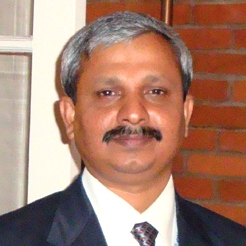Wi-Max Promise: Pranesh Babu, CTO, Sify Technologies

The explosive growth of mobile phones in India is the best indicator of the potential of Wi-Max wireless broadband services. The key factors driving the growth of any wireless technology include affordability, spectral efficiency (given the scarcity of spectrum), scalability, robustness, open standards and the availability of harmonised devices across countries.
In addition to readily available smartphones are tablet PCs that provide a wider screen size than mobile phones and are very intuitive and easy to use. Smart mobile handsets and tablets are also packing in very interesting mobility applications making people more productive in whatever they want to do.
The best-suited broadband wireless technology for India, considering the potential number of customers and scarcity of spectrum, is Wi-Max. It has the best spectral efficiency (bits of data per hertz of spectrum) compared to 3G technology and provides decent broadband experience to the users. The Wi-Max Forum is already planning to release their next version of Wi-Max 16m that should further enhance spectral efficiency. The good news is that it is backward compatible with the current Wi-Max 16e standard.
Today, Wi-Max deployments in India are mostly Wi-Max 16d that are fixed Wi-Max deployments more directed towards the enterprise, SME and high-end home user segments. Wi-Max 16d is a first-generation Wi-Max technology and does not have some of the advantages of the current Wi-Max 16e technology like near-non- line-of-sight, interoperability and mobility (hand off between cells). The switch and deployment of Wi-Max 16e in India is still at a nascent stage.
The most important growth driver for Wi-Max adaption in India is the availability of a harmonised wireless spectrum and availability of inter-operable customer premises equipment (CPE) devices in various forms like outdoor CPE, indoor CPE, USB dongles, mobile handsets, etc. The 2.5 GHz and 2.3 GHz bands have been identified as the harmonised bands for Wi-Max 16e by WPC in India for broadband wireless access.
Interoperable CPE devices are also available in this band. The current infrastructure status in India with respect to terrestrial connectivity in terms of fibre/copper rollout to the building or street is limited and would take a long time, as the cost of implementation, time taken and the bottlenecks for terrestrial connectivity are far too high. Wi-Max 16e becomes the best alternative to terrestrial connectivity in terms of bandwidth speed and reliability. Wi-Max also provides the option of quick and cost-effective rollout of the access infrastructure for wireless broadband services, which is the need of the hour considering the dismal results of broadband penetration in India.
The success of broadband wireless access (BWA) in India is not without its own set of challenges. While the spectrum auction for broadband wireless has been completed, it is important to note that this is coming at a huge cost. This huge upfront investment from the service provider compounded by the initial infrastructure cost would force the service provider to make the services expensive. Keeping up to the promise of reaching the bottom of the pyramid would be a tall task. The quantum of spectrum being offered per service provider is only 20 MHz while the recommended spectrum allocation to an operator by the WiMAX Forum is 30 MHz. Countries with much lesser potential than India have allocated frequencies in excess of 40 MHz per operator. This would mean the service provider will not be able to realise the full bandwidth capability of the base station equipment and would end up using the infrastructure sub-optimally.
This would also mean that the cost of infrastructure to support the services would go very high. Quite naturally, with a huge customer base, service level degradations can be expected as the base grows. While the 3G and BWA frequency bands were allotted simultaneously, BWA operators are yet to start services while 3G services have already started rolling out. Justifying the business case for BWA, taking into account only data usage, would be a challenge.
There are only three BWA spectrum holders in a circle, thereby restricting competition. The key to the success of broadband penetration in India today is indeed, Wi-Max but there is an urgent need for the government to identify additional slots of spectrum to be released for Wi-Max broadband access so as to reduce the cost of services.
- Most Viewed
- Most Rated
- Most Shared
- Related Articles
- Solar Opportunity: Business case for the...
- Telecom Infrastructure in India: Anil Ta...
-
Sitapathy Chavali, Reliance Communicatio...

- Dr. Vikram Saksena, EVP & CTO, Tellabs
- The global surveillance market is experi...
- Understanding cloud telephony and the co...
- LTE offers comprehensive IP based teleco...
- 2014 promises to be another year of disr...
- Interview with Dr Lakshminath Dondeti, D...
- IT trends for 2014: John Michelsen, Chie...






